#IBM 5160
Explore tagged Tumblr posts
Text


Found on one of my Wiby trips (search engine for the old web and things based on it, pulling from sites that don't use any JavaScript), an IBM library floating around on the web. Not sure how official this is/was, but all the links still seem to connect.
1 note
·
View note
Text
Note: this does not include PC clones.
71 notes
·
View notes
Text


IBM XT 5160
86 notes
·
View notes
Text
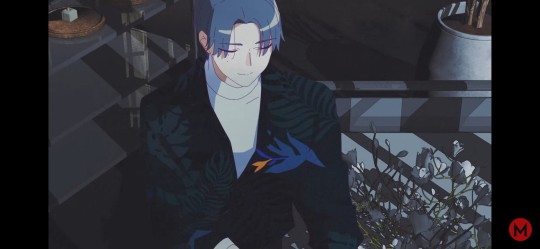
he identifies as an IBM 5160 PC XT
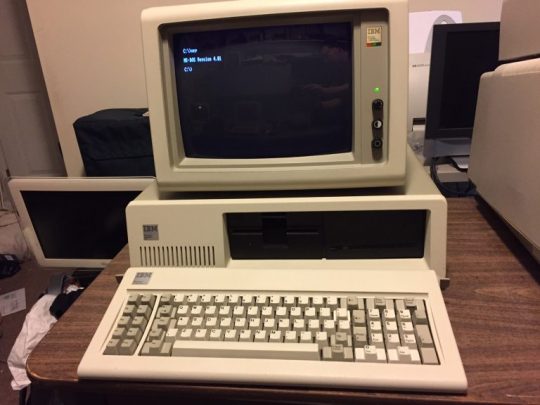
image source
10 notes
·
View notes
Video
youtube
9) IBM 5160 sanal makineye PCDOS 2.1 kurulumu #sanalmakine #sanalsistem #86box #DOS #PCDOS #kurulum #komutlar #ibm5160
0 notes
Text

Magic Smoke
I have a project I'm working on that needs an XT class machine, preferably at the original 4.77MHz.
I have an original IBM 5160 motherboard. It has a tantalum capacitor that is a direct short on the power supply. I also have an XT clone motherboard that I've successfully tested and booted a number of times.
I recently acquired a nearly complete XT clone system, but it was a 10MHz turbo XT, and missing its CPU. So I installed the known-good 4.77MHz XT clone board in the 10MHz clone case.
Flipped the switch and nothing happened. The power supply clicked like a switch mode supply failing to start up, so I quickly turned it back off. As the supply's capacitors slowly discharged, it continued its death click until ...
Pop goes the magic smoke.
I suspected the power supply at first. I've not had it as long, and those Rifa input filter capacitors are notorious for blowing at random times. Inside of the supply was surprisingly clean. No sign of damage, and thankfully, no sign of Rifa.
So turning attention to the motherboard, I found the culprit — a 16V tantalum filter capacitor across the 12V power supply. These too are notorious for blowing at random times.
Time for a capacitor order, I guess.
13 notes
·
View notes
Photo

Yeah, I’m a hardcore gamer.
14 notes
·
View notes
Text


Vintage PC Collection (ibm 5150, 5160, model 25, and more)
1K notes
·
View notes
Text
Picked this guy up at a Garage Sale for 40$

Came with the printer too. Right now, doesn’t seem to work great, though does turn on. CGA Cable on the Monitor is missing a pin, inside the computer its self (so far I know) it is missing the aluminum platters (very old form of Hard Drive memory).
What is it? IBM 5160 from 1983, roughly as powerful as my laptop I have posted about here a few times (Amstrad PPC640 (cir 1988)). The monitor is an IBM 5153, colour CGA monitor. This unit original ran for about 7,000 USD (equivalent of 20,000~ USD in 2022). Just the computer its self weighs in about 37 Pounds, the Monitor and Keyboard add another 30-40 pounds to it. From what I know, this specific one looks like it has a double density A:// (5.25in) Drive, and a 20MB Hard Drive. That is quite a bit for its time, as this should allow the machine to store a handful of games as well as an operating system.
These are supposedly one of the most influential computers ever made. I’ll post more updates about it soon, as a mutual of mine is going to be helping me restore it to its former glory days.
176 notes
·
View notes
Text



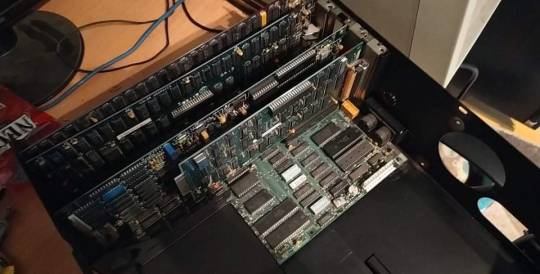






Nos az van, hogy szereztem egy IBM PC XT-t (5150) és egy hozzá való 5153 színes cga monitort. 4,77 MHz, 512 kb ram és 10 mb hdd. 5.25 360k-floppy. Eredeti Intel 8088. 1984 júliusi masina.
A másik egy 5160-as Pc Dos 3.0-val. 1983. És ehhez van original ModelM keyboard. Felhívnám a figyelmet a zöld monitorképre. Pécsi Agroklompex Rt. üzemviteli szoftvere fut rajta. (Pro tipp: clin+szódabikarbóna csodákat tesz a 35-40 éves műanyag felületekkel)
@szkennelttucsok
60 notes
·
View notes
Photo
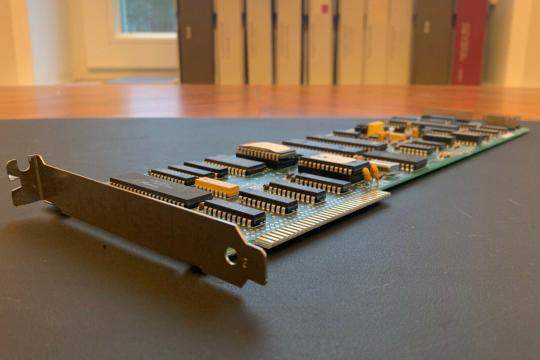
https://ibm.festplatteni.biz/
Original IBM MFM Hard Disk Controller PC 5150 & XT 5160 für diverse Festplatten
0 notes
Text
File 1: The PC/XT

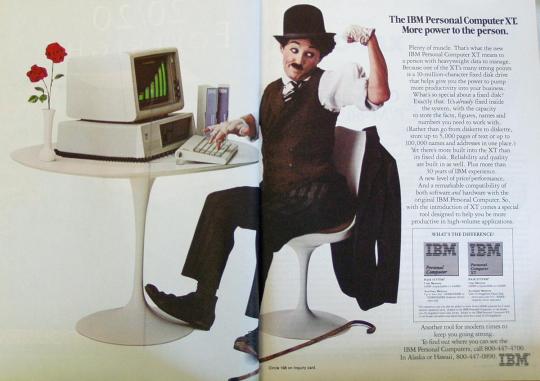
Where it all began, more or less
This is the IBM 5160 PC/XT, the 1983 follow-up on 1981's IBM 5150 PC. By itself the 5160 was largely an iterative advancement on the 5150 PC, most notably trading the earlier model's little-used cassette connector for three more ISA expansion slots totalling at eight versus the PC's five. The PC/XT's BIOS also had some enhancements meant to make hard disk I/O easier, but these were also integrated into later PC BIOS revisions. The minority of the changes the XT brought to the table are nonetheless significant; They mark the point where Intel's x86 (and later x86-64) architecture slowly started to become codified as a standard in computing. To this day, your average Intel or AMD CPU-based computer can run code meant for the PC 5150 and 5160 unaltered (with certain caveats such as needing a MS-DOS or FreeDOS boot floppy). Much like it's precursor, the PC/XT is powered by a 4.77MHz Intel 8088 CPU and can push up to 640 kilobytes of RAM (but in the early days, maxing it out would have been extremely unusual). I'd been obsessed with these systems for a fairly long time, considering the acquisition of one a milestone for my computer collection.

In November of 2017, something caught my eye: A man downstate near Peoria selling a IBM PC/XT in pretty darn fine shape with one floppy drive and one hard drive, complete with a Amdek data display and a original IBM Personal Computer keyboard¹. All that kit, and the guy was at a fair price, to boot! I'd wanted one of these for more than a decade and I had a decent surplus of cash thanks to paid time off having paid out at work a few days earlier, so I'd be an absolute moron to not have jumped on it. The only catch? Pickup was local only, and I didn't have a car at the time. This would be an immediate and pressing issue, but it turned out the man came up to Chicagoland regularly and had business in my neck of the world anyways. At that point, I could have borrowed a ride for a short distance run to the meeting place he'd proposed, a furniture outlet two towns over, pretty easily. It was a date with destiny.

So it went. A few days later, I rolled up and parked at said shop. The machine's seller turned out to be an older fellow who greatly resembled Joseph Joestar (Pictured above) to a disturbing degree. The actual exchange went pretty smoothly. I went in the shop and ate some awful, awful (yet satiating) meatballs. The trip home was pretty uneventful. So far, so good...and I was fresh off the restoration of a IBM 5170 PC/AT I’d picked up at VCFMW, so at the time I figured this one wouldn't hold many surprises. Besides, the IBM PC was the standard most people imitated at the time if they went for MS-DOS. It'd have to be a breeze, wouldn't it? This theory wouldn't hold water, and soon I'd find myself surprised by the fact that it did, in fact, hold many surprises.
“Hey, wanna hear the most annoying sound in the world?"
When I made it home, I slapped it on my workbench and popped it open for an initial inspection. The machine had obviously seen some upgrades over it's lifespan: The installation of an aftermarket power supply, a Hercules monochrome graphics card, a 3600RPM 30MB Seagate ST238 hard drive, a Tecmar Captain Real Time Clock/Serial/Parallel/Memory board, and a Scientific Solutions DADI/O card. The latter most card was the most curious in retrospect, since it hinted at the machine's background in ways pretty much nothing else could. I doubt I'll ever find out exactly what that background was since it didn't occur to me to ask the seller at the time, but the hint it represents is fascinating since that's not something you'd think you'd find in an old farmer type's WordStar 4 machine...which, by all means, this thing had otherwise appeared to be to this point.


It's worth mentioning here that the hard drive I'd previously alluded to was a model using the MFM interface, the late '70s - mid '80s precursor to the more modern IDE/PATA and the SATA interface seen in pretty much every modern computer. MFM drives are fickle but impressive beasts, with their controller hardware on a separate expansion card and little brains of their own. They're slow, they're loud, they're clunky and they're an awe to behold in spite of (or perhaps because of) all that. They have actual, honest to god stepper motors and mechanical brakes. When they work, they're impressive as hell but...they often don't. At least, I've found more dead ones than I've found live ones. Naturally, when I first turned the machine on as-is to kick off the smoke test process and assess precisely what I'd need to fix up, I heard said MFM hard disk warm up... followed by a shrill, piercing dragging noise that could only be the hard disk's read/write head burying itself in one of the hard disk's platters. That lack of smarts inherent to MFM hardware I'd alluded to had come back to haunt this system, since MFM drives typically don't know to automatically park the head somewhere catastrophe is less likely to strike unless the command is issued manually by the user. It pretty obviously wasn't parked before the machine was put into storage, so at some point in time the machine was jostled enough to put the head somewhere it'd thrash the drive as soon as it was given power again. In layman's terms, the thing was toast. Well, shit. I like to keep hardware period accurate where I can, but MFM drives are prone to wild price fluctuations and you often have to gamble on untested drives when buying used due to how difficult they can be to test. Thankfully, a relatively practical solution that cuts out some of the uncertainty exists and I'd had good luck with it on previous projects with dead drives: An IDE controller card loaded with the XT-IDE Universal BIOS. Usage of an IDE card would allow me to hook up something more readily available (Such as an old 80gb drive or even a CompactFlash memory card), and usage of the XT-IDE BIOS would make booting simpler since that would mean not having to gamble on the card's own BIOS (or lack thereof). The pair are a pretty common solution to this sort of boondoggle to the point that there are open-source card designs readily available for purchase from many sellers, including Glitchworks , whom I've relied on in the past quite a bit and from whom I wound up purchasing a Revision 4 XT-IDE card from for this project. I also snagged a nice 64mb Cisco cF card off ebay, which would pretty much have to be bootable since it was formerly boot media for some smart network switch or something that's outside the scope of this article.
Hey Mr. Postman, Man me a Post
Time passed, the U.S. Postal Service did its thing, and I planned and prototyped what the final IBM DOS install would look like using PCEm. I was initially targeting IBM PC-DOS 2.11 since that version of DOS is what the PC-XT shipped with, but decided 3.30 would be a better choice since it'd fit the machine's upgrade history and most MS-DOS software out there expects 3.0 at a minimum. DOS 3.0 through 3.30 were essentially to DOS what Windows XP would later be to Windows in terms of longevity.

I also attempted to remove some of the light rust from atop the case using the tried-and-true method of vinegar and tinfoil. I succeeded at getting rid of a fair bit of the corrosion, but also took some of the paint with it; that paint used on the IBM PC line's chassis is a textured, unusual spatter coat job that's both a pain and expensive to reproduce to the point that it's just not worth it to spray paint. Typically people just accept the blemishes or find a replacement case altogether. This exact thing had happened with my PC/AT previously, so I don't really know what I was expecting to happen. Thankfully, the monitor mostly obscures the blemishes.

I also wound up attempting to service the 5 1/4" floppy drive at this time, which was in dire need of some care and plagued by mechanical issues. The read and write head wouldn't work reliably for anything and the movement of said head was almost comically stiff. Getting things cleaned up was superficially simple enough; most of the time all that's needed is cotton swabs and some isopropyl. Clean the read/write head, take off the old, gunky, dusty grease on the drive rails, and you're solid. Regreasing the rails so that the head could move freely also went simply enough, merely needing some white lithium grease on the previously cleaned rails. Using my testing boot media I got the system booted into DOS using a floppy after the cleaning; While 360kb of space wasn't nearly enough this wasn't meant to be the final setup. Cramped, sure, but it sufficed for testing. By all means, the drive seemed to be working fine now since it superficially read and wrote fine while also formatting without errors...and if anything was wrong, it sure wasn't obvious to me or the system itself. Eventually the XT-IDE card made it in. I slotted it in, hooked up my cF-IDE adapter, and set up DOS onto the drive. When I tried to boot off the hard disk the first time, though, I was greeted by a screen full of garbage and rancorous beeping from the system's speaker. Something was wrong, and I had no idea what since typically the setup process for XT-IDE cards is pretty braindead once it's assembled properly and in the system. Repeated attempts at re-installation of both the card and the operating systems yielded no changes, and even taking the XT-IDE card and cF card out altogether for a transplant install in my PC/AT (my "known good" testing system) lead to nothing but more garbage on what is otherwise a computer willing to take whatever absurdity I throw at it with grace and gusto. Trying different floppy disk install media and different DOS versions did nothing to fix the corruption issues the thing was having, and it didn't like different cF cards either. What was happening? On pointers from Glitch himself and some other friends on a chain of IRC channels I hung around, I ran diagnostics of various types, including pulling all the installed expansion cards one-by-one and testing to rule out conflicts. There were none, and by all means pretty much every part of the system but the card checked out fine.
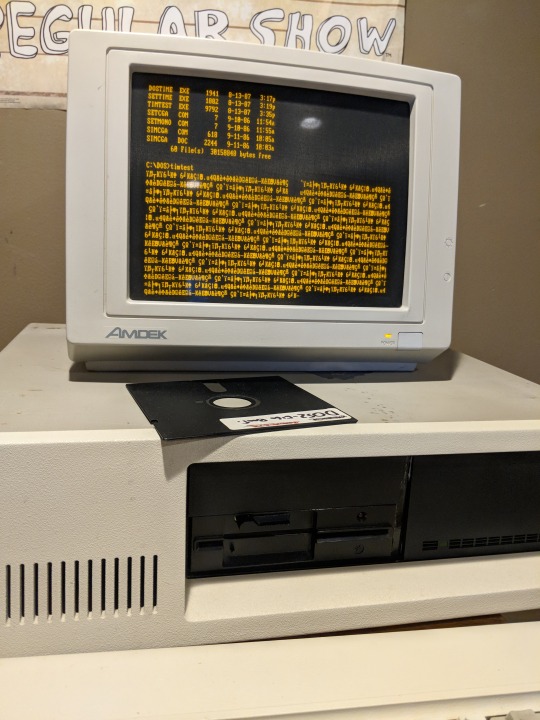
It turned out my card had a 573 latch go bad due to an issue with a bad shipment of ICs from a part supplier on Glitchworks' end, so with help from Glitch, the namesake and head honcho of the company, that all was simple enough to sort out; the board had the bad IC swapped out in no time at all. Once that all was in order, I found myself facing mounting frustration as the system still didn't want to boot off the cF card (but just hanging on boot with no errors or anything at all instead of spewing garbage all over the screen now), but I noticed it sometimes - yet inconsistently - did like mechanical hard disks and more robust IDE DOMs. Programs also experienced random corruption issues, too. I wasn't in the clear quite yet; I had a weak step in the install process to find which was corrupting DOS installs left and right.
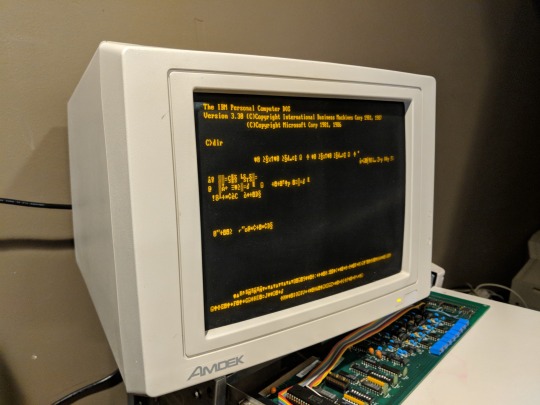
My only clue? Transplanting the card to the PC/AT and installing DOS from there worked perfectly fine, even after moving the card back to the PC/XT. The PC/AT's boot card also worked just fine in the XT. That suggested that whatever the issue was, it was isolated to the PC/XT's input/output facilities specifically. The XT-IDE card itself actually was perfectly fine now and the similar symptoms to that of the bad latch were mere red herrings. It took me a while (and some shouting at from friends) to make the connection, but eventually I came to the conclusion that I should give the floppy drive a one-over using CheckIt, a personal go-to software suite for diagnostics on DOS systems. Lo and behold the floppy drive was generating absurd amounts of read errors, and at that point they could only be caused by capacitor issues (which would be fairly serviceable to fix but not immediately worth doing) or alignment issues (in which case the drive might as well be scrap²). It was easier just to not use the 360k drive. With the knowledge that the floppy drive was not to be trusted at all under my belt as well as the knowledge that any operating system installation should be done from the PC/AT, I proceeded to take another crack at things. I wound up with the PC/XT's Cisco CompactFlash card booting fine in the PC/AT but not the PC/XT, and the PC/AT's Compactflash card (a cheaper SanDisk card) booting fine in both. I figured I'd try swapping the cards out in full and this resulted in both machines working perfectly, as the PC/AT was more than happy with the theoretically nicer Cisco card. CompactFlash media can be fickle like that, but considering the SanDisk card is a significantly cheaper card meant for cameras yet proved more to the PC/XT's taste than a card expressly meant to be used as boot media is just bizarre; However at that point I couldn't be bothered to question things further since they well and truly worked from then on out. That wrapped up the last of the technical hurdles, and I was free to work on the machine at the software end of things.
AND REVERSI!
File transfer would be downright trivial with the cF card as my fixed disk, being just a matter of pulling the card from it's slot in the rear of the system and shuttling it over to my desktop in order to add programs or files. That wouldn't be a luxury I'd have with the DOM, in which case I'd have to deal with comparatively slow exchanges using FASTLYNX. I decided to stick to IBM DOS 3.30 with XTREE 2.0, a typical DOS shell and one that might have realistically ben in use in the machine's heyday. I also got Windows 1.01 installed, but without a mouse it's somewhat awkward to use. I can get a mean game of Reversi, Windows 1.01 through 2.11's built in game, going though.

Since that last bit of struggle with storage, everything has been essentially silk smooth. It was a months-long ride of trial and error, but in the end I finally got the working PC/XT I'd been wanting for years. Brutalist and built like a tank yet oddly attractive in that '80s way, the machine is an absolute blast to both use and behold. I can easily see it remaining the keystone of my collection for some time to come. There's still some stuff i'd like to sort out and some experiments I'd like to carry out (especially in regards to that Hercules graphics card I mentioned, which is worth a write-up in it's own right), but for now I can rest easy knowing that I've managed to get it back in shape in spite of what felt like three months of non-stop obstacles.

1: The IBM PC 5150 and PC/XT 5160 keyboard microcontroller used a much different protocol for input and output on a hardware and software level than the one in the later IBM 5170 PC/AT and onward would use. This means that if you scalp a PC or PC/XT-friendly keyboard (or any other legacy system's keyboard, on that thought) for the neato mechanical switches you're going to have an extremely difficult time finding a replacement. Don't do that; Consider a more modern mechanical keyboard instead. They're cheaper, just as good, and you don't potentially irreversibly gore a computer that way.
2: Alignment issues are dependent on blind luck or stupidly expensive and rare specialty equipment to fix. Even then, you still need a bit of blind luck.
36 notes
·
View notes
Text



IBM 5150, 5160 XT 1:10 scale figure
520 notes
·
View notes
Text
What is PC XT in Hindi | PC XT Kya Hai | Features of PC XT in Hindi
What is PC XT in Hindi | PC XT Kya Hai | Features of PC XT in Hindi
What is PC XT in Hindi | PC XT Kya Hai | Features of PC XT in Hindi:- IBM पर्सनल कंप्यूटर XT, जिसे अक्सर IBM XT, PC XT या केवल XT के रूप में छोटा किया जाता है, यह एक निर्मित Hard Drive के साथ IBM PC का एक संस्करण है।यह 8 मार्च, 1983 क�� आईबीएम मशीन टाइप नंबर 5160 के रूप में जारी किया गया था। हार्ड ड्राइव के अलावा, यह मूल पीसी के समान ही था, जिसमें केवल मामूली सुधार था। XT मुख्य रूप से व्यापार…

View On WordPress
0 notes
Photo

Ibm 41y4280 Intel Xeon Dual-core 5160 30ghz 4mb L2 Cache 1333mhz Fsb Socket-lga771 65nm 80w Processor Only https://ift.tt/2K7fU7z
0 notes


